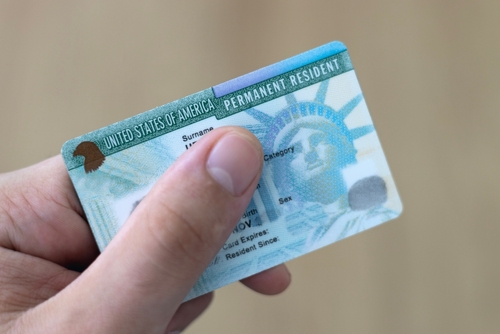If you’ve recently moved or are planning to, updating your address on your green card is not just a good practice—it’s required by U.S. law. The process might seem daunting, but with the right steps and information, you can complete it smoothly and avoid potential issues.
This guide will explain the process for changing your address on a green card, the requirements, and tips to ensure everything goes seamlessly.
Why You Need to Change Your Address on Your Green Card
U.S. Citizenship and Immigration Services (USCIS) mandates that all lawful permanent residents update their current address within 10 days of relocating. Failing to do so may result in fines, penalties, or complications with future immigration processes. Beyond meeting legal requirements, updating your address ensures you receive critical notices and documents on time.
What Happens if You Don’t Update Your Address?
Failing to notify the USCIS of an address change can lead to potential repercussions like missed notices of deadlines or appointments and even legal issues. To protect your immigration status, staying compliant should be a top priority.
Need to replace your green card due to an error or damage? Read this helpful guide on replacing your green card.
Step-By-Step Guide to Changing Your Address on a Green Card
Step 1: Gather Necessary Information
Before you begin the process, ensure you have the following on hand:
- Your green card (for essential details like your Alien Registration Number or A-Number)
- Documentation of your previous and new address
- Any receipts, reference numbers, or supporting details from past applications
Step 2: Choose Your Update Method
There are two main ways to update your address with the USCIS:
- Online
- Visit the USCIS Change of Address webpage.
- Complete Form AR-11 (Alien’s Change of Address Card).
- If you have a pending application, you will also need to update your address on that as part of this process.
- Pro Tip: Save your confirmation number or take a screenshot of the final submission for your records.
- By Mail
- Download and print Form AR-11 from the USCIS website.
- Fill out the form, and mail it to the listed address.
- Be mindful of delivery times when using this method. Opt for certified mail if you want tracking options.
If you’ve recently submitted an application, updating your address doesn’t automatically update it for specific cases. You’ll need to separately inform USCIS about your new details.
Special Circumstances to Keep in Mind
Family Members
If you and your family members share the same green card status, each individual must file a separate address change.
Pending Applications
Do you have an application, such as naturalization or adjustment of status, already in process? You’ll need to update your address both via Form AR-11 and with the specific case number on your pending application.
International Moves
If you’re moving outside of the U.S. permanently, other steps may be required. It’s wise to consult with an immigration attorney to understand how a move affects your green card status.
Tips for a Hassle-Free Process
- Double-Check Accuracy: Ensure all details match exactly as they appear on your green card.
- Act Quickly: Submit your change as soon as you move to avoid delays or potential fines.
- Keep Copies: Retain copies of your completed forms and confirmation numbers for your records.
For immigrants navigating address changes and other processes, having reliable financial tools can simplify the experience. Learn how to create proof of address without bills if needed for documentation.
Frequently Asked Questions (FAQs)
1. How long does it take for USCIS to process an address change?
Processing times vary, but most updates reflect within a week for online submissions. Mailing your form can take longer depending on delivery times.
2. Can I use a P.O. Box as my new address?
No, USCIS requires a physical residential address for green cardholders to meet federal requirements.
3. Do non-immigrants need to update their address?
Yes, most non-immigrants must also submit an address change to USCIS. Refer to Form AR-11 to check if these requirements apply to you.
4. Is there a fee for changing my address on my green card?
No, updating your address is free on Form AR-11.
Stay Compliant and Stay Connected
Changing your address on your green card doesn’t have to be complicated with the right resources and steps. By staying on top of your address update, you’ll remain compliant with U.S. law and reduce the risk of missing important communications.
For more tips on navigating immigration processes, subscribe to our newsletter or explore our other helpful guides, like how to obtain a U.S. passport as an immigrant.
